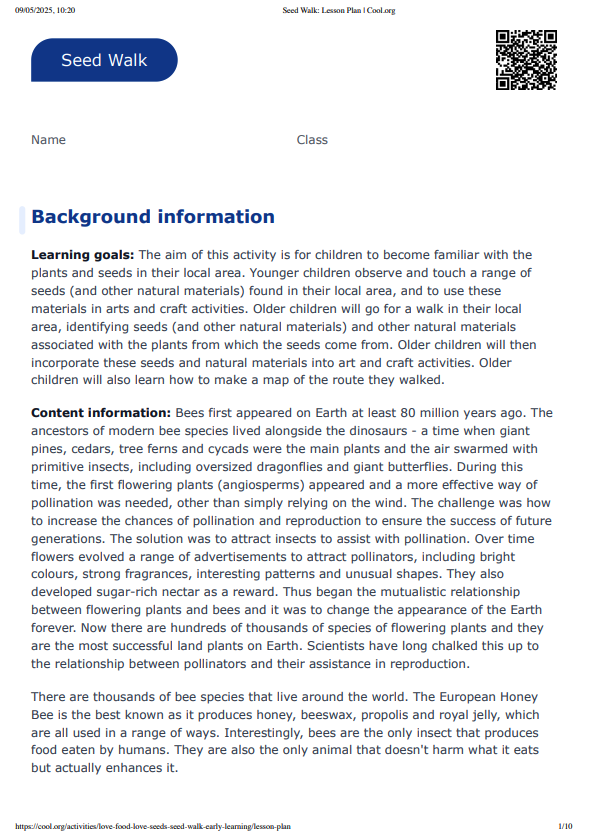Lesson summary
In this activity children investigate seeds in their local area. Younger children are asked to observe and touch a range of seeds (and other natural materials) found in their local area, and to use these materials in art and craft activities. Older children will go for a walk in their local area, looking for seeds (and other natural materials) which they will collect to incorporate into art and craft activities. Older children will also make a map of the route they walked and will mark the main features of their walk on their map. This activity is designed to help connect children to the wonders of the natural world through sensory and play-based learning.
Activity Intention:
- This activity is designed to help connect children to the wonders of the natural world through sensory and play-based learning.
Lesson guides and printables
Lesson details
Curriculum Mapping
Learning Outcome 2:
- Children are connected with and contribute to their world
- 2.4 Children become socially responsible and show respect for the environment
Learning Outcome 4:
- Children are confident and involved learners
- 4.1 Children develop dispositions for learning such as curiosity, cooperation, confidence, creativity, commitment, enthusiasm, persistence, imagination and reflexivity
- 4.2 Children develop a range of skills and processes such as problem solving, inquiry, experimentation, hypothesising, researching and investigating
- 4.4 Children resource their own learning through connecting with people, place, technologies and natural and processed materials
Learning Outcome 5:
- Children are effective communicators
- 5.1 Children interact verbally and non-verbally with others for a range of purposes
Resources Required
Ages 0 – 2:
- Collect a range of fallen seeds and seed pods from your local area, such as acorns, pine cones, gum nuts etc. Where necessary, place smaller seeds in sealable plastic tubs to prevent children from putting the seeds in their mouths. You could also collect a range of other natural materials, such as interesting leaves and bark.
- A natural medium such as clay or sand.
- Craft materials, such as glue, paper, tape, string, paint etc.
Ages 3 to 5:
- Craft materials such as cardboard, glue, tape, string, marker pens etc.
- Hats, sunscreen and any other equipment specified in your centre’s outdoor play policy.
Additional Info
This lesson has been created in partnership with ACT for Bees. ACT for Bees is a not-for-profit organisation taking action to preserve these essential pollinators, ensuring a food-secure future.


Welcome back!
Don't have an account yet?
Log in with:
Create your free Cool.org account.
Many of our resources are free, with an option to upgrade to Cool+ for premium content.
Already have an account?
Sign up with:
By signing up you accept Cool.org's Terms and Conditions(Opens in new tab) and Privacy Policy(Opens in new tab).